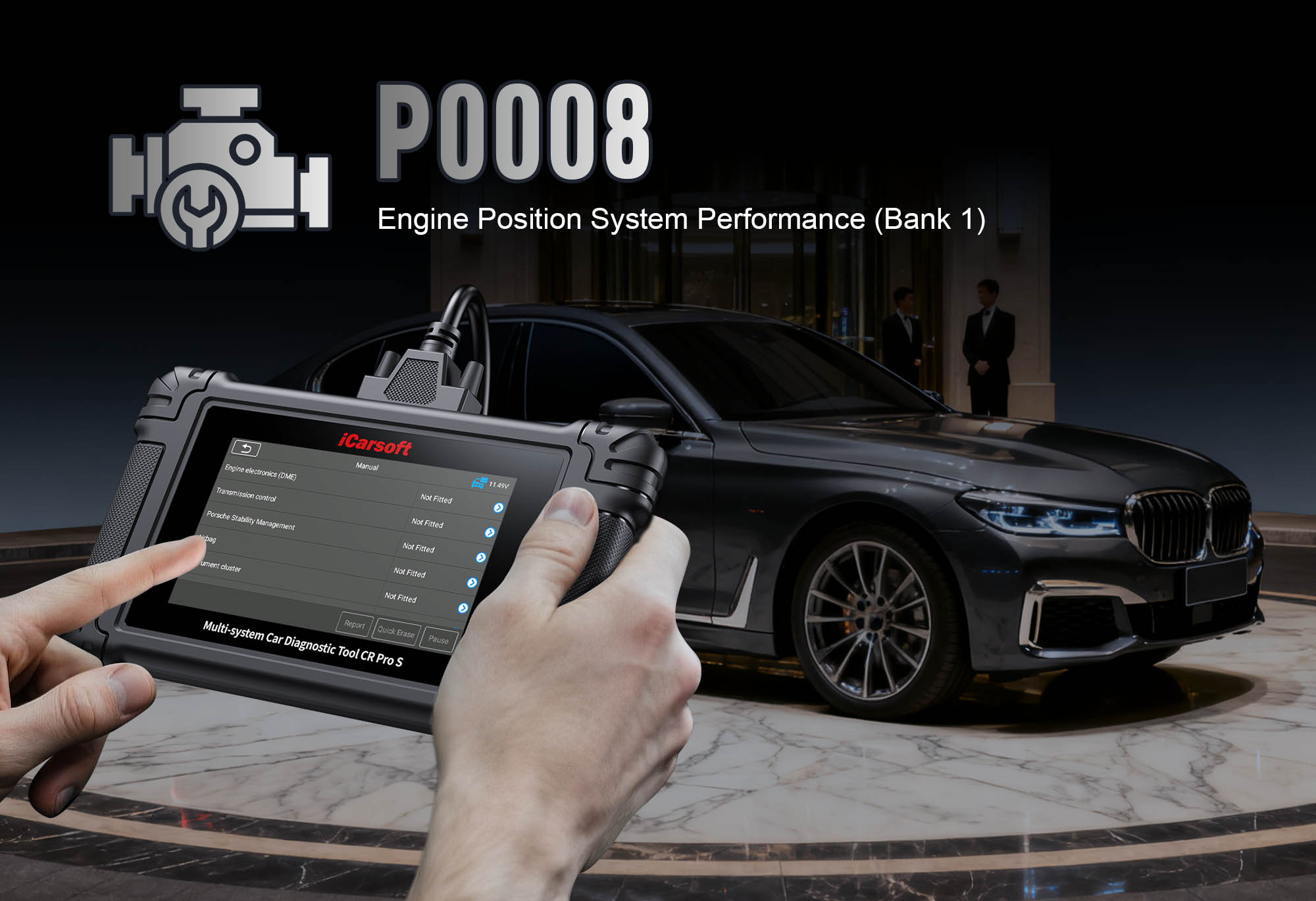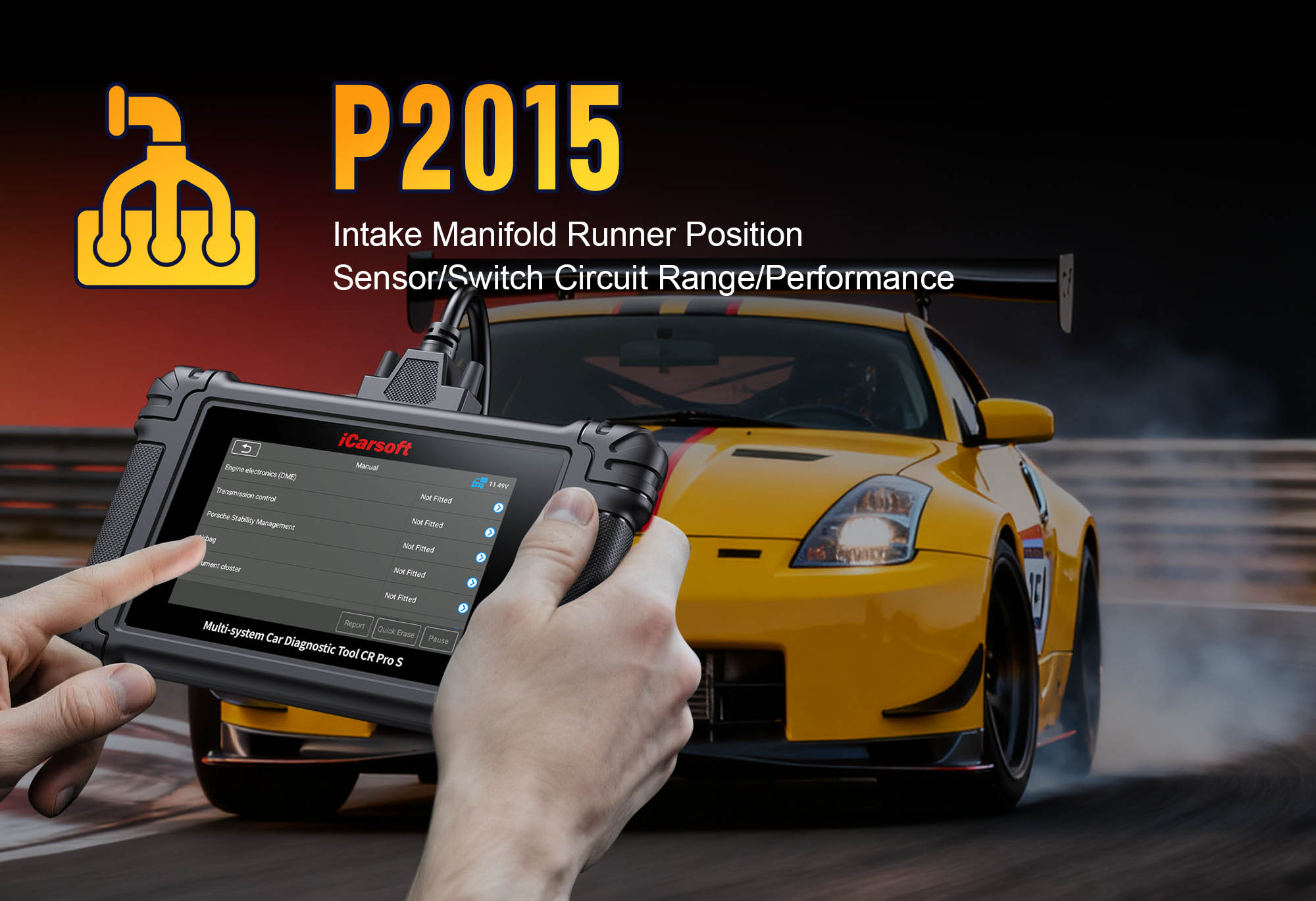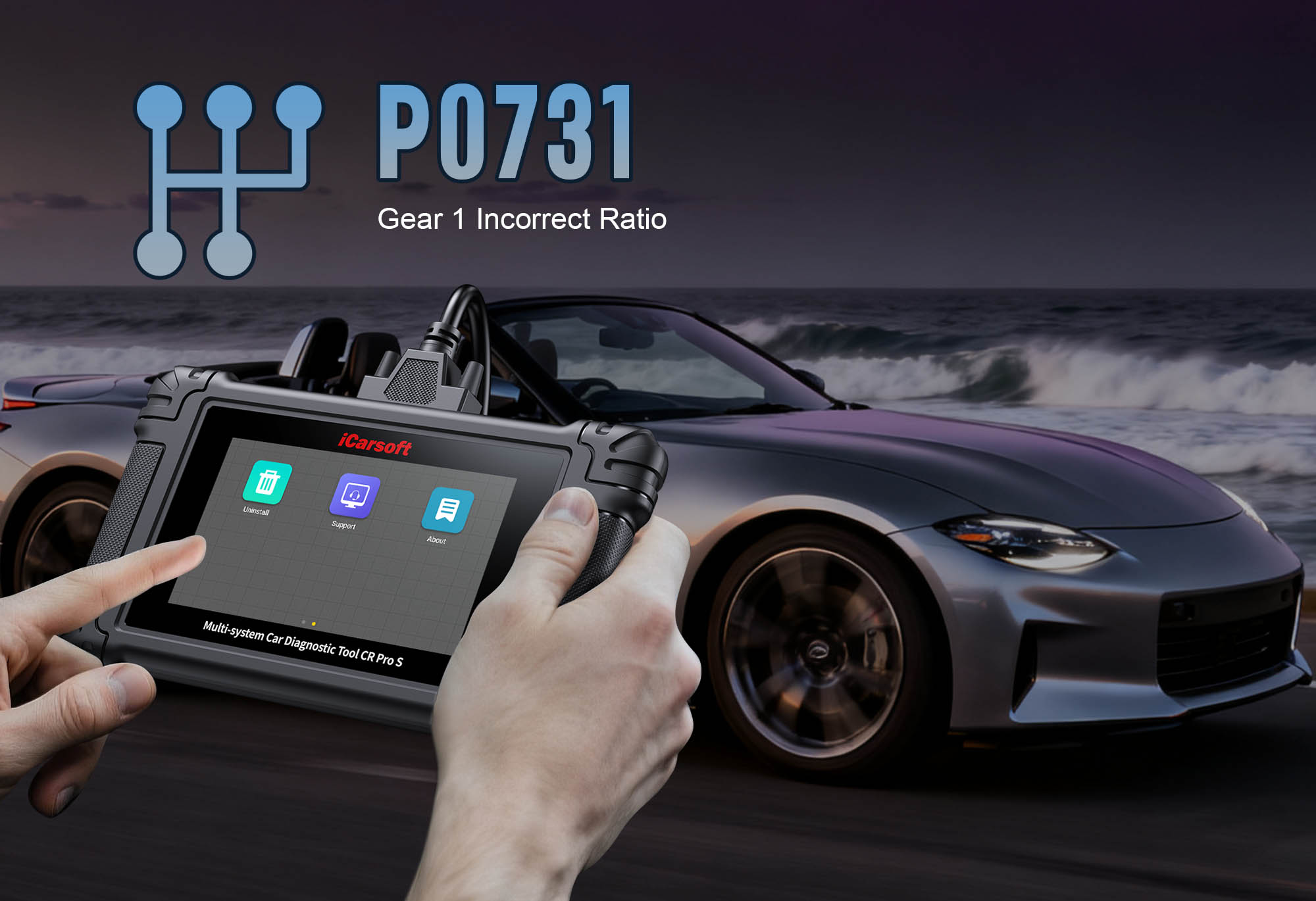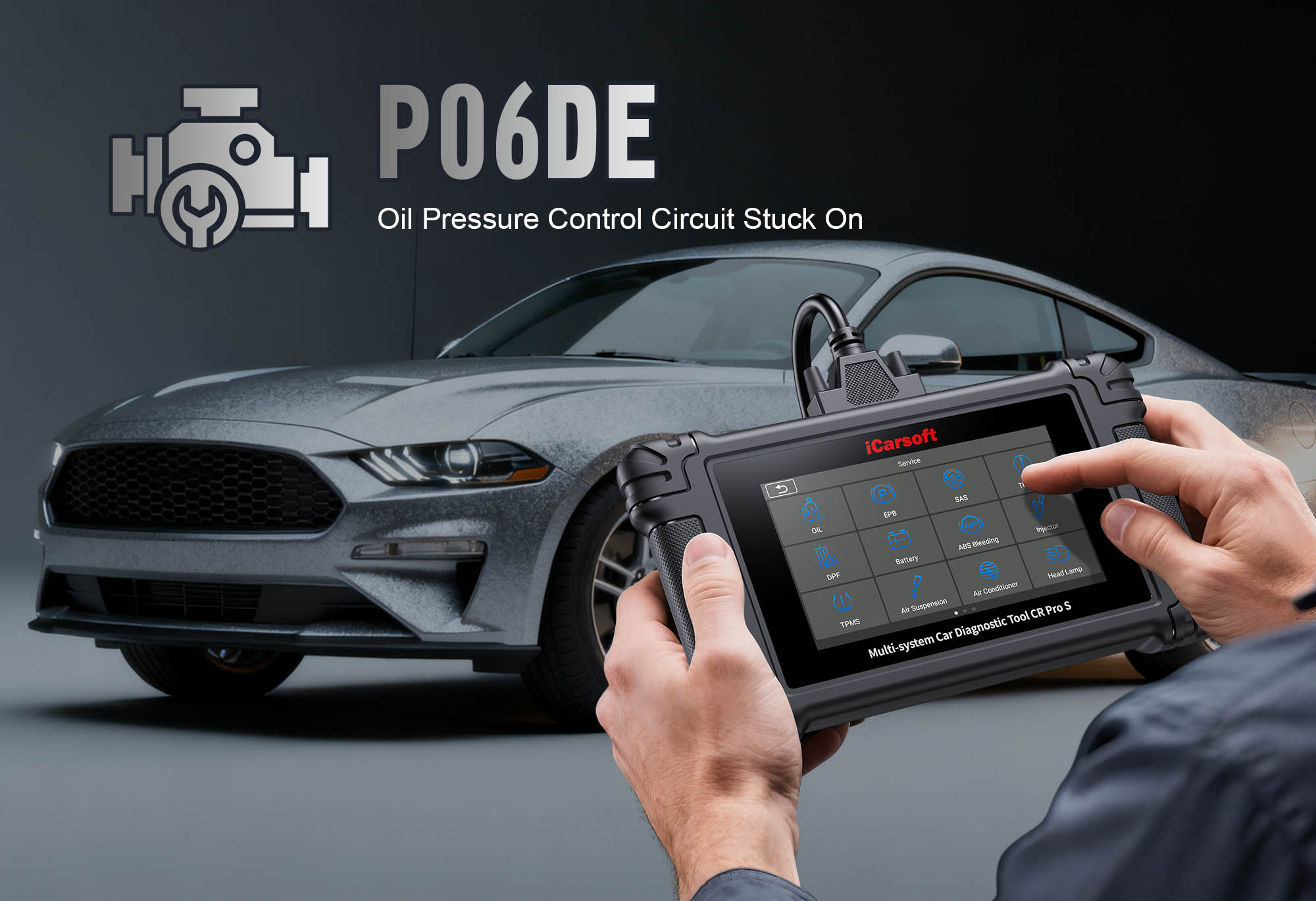P0008 Code: Diagnose & Clear Fuel Control Circuit Range/Performance with iCarsoft CR Pro S
If your check engine light illuminates and you notice symptoms like rough idling, hesitation during acceleration, or increased fuel consumption, a diagnostic scan will likely return P0008. This OBD-II code stands for "Fuel Control Circuit Range/Performance," indicating the Engine Control Module (ECM) has detected that the fuel system’s control circuit is operating outside its normal parameters.
The fuel control circuit is the backbone of your vehicle’s fuel delivery system: it includes the fuel pressure regulator, fuel injectors, fuel pump relay, and the wiring connecting these components to the ECM. The ECM uses signals from this circuit to adjust fuel pressure and injector pulse width—ensuring the engine gets the exact amount of fuel needed for optimal performance and emissions. When the circuit’s voltage, resistance, or signal timing strays beyond the ECM’s preset range (e.g., too high/low fuel pressure, unresponsive injectors), P0008 triggers. Left unaddressed, this can lead to engine misfires, catalytic converter damage, or even complete fuel system failure.
Basic scanners may only flag "fuel control fault" but can’t isolate whether the issue is a faulty regulator, clogged injector, or wiring short. The iCarsoft CR Pro S, with its fuel system-specific diagnostics, live pressure tracking, and injector tests, solves this. Let’s walk through how to diagnose and resolve P0008 with precision.
Understanding P0008: Causes & Key Symptoms
A malfunctioning fuel control circuit disrupts fuel delivery, with symptoms that worsen as the issue escalates—these clues help separate component faults (regulator, injectors) from electrical issues (wiring, relay).
Key Symptoms of P0008
-
Rough Idling: The engine shakes or vibrates at idle (500–1,000 RPM) due to inconsistent fuel flow.
-
Acceleration Hesitation: A 1–2 second delay when pressing the accelerator—noticeable during highway merges.
-
Increased Fuel Consumption: Fuel efficiency drops by 10–20% as unoptimized fuel delivery wastes gas.
-
Engine Misfires: The engine "sputters" under load (e.g., climbing hills) from incomplete combustion.
-
Catalytic Converter Overheating: Unburned fuel enters the exhaust, causing a burning smell or glowing exhaust components.
-
Intermittent Issues: Symptoms come and go—triggered by temperature changes (wiring) or dirty fuel (injectors).
Common Causes of P0008
|
Cause
|
Description
|
|
Faulty Fuel Pressure Regulator
|
Fails to maintain steady pressure (normal: 30–80 psi), leading to too much/too little fuel reaching injectors.
|
|
Clogged/Leaking Fuel Injectors
|
Dirt, carbon buildup, or leaks disrupt flow, causing uneven fuel distribution to cylinders.
|
|
Fuel Pump Relay Failure
|
A faulty relay cuts power to the fuel pump, reducing pressure in the control circuit.
|
|
Wiring/Connector Issues
|
Corroded terminals, frayed wires, or loose plugs drop voltage or interrupt ECM signals.
|
|
Dirty Fuel Filter
|
Clogged filter restricts fuel flow—common in vehicles >30,000 miles without filter replacement.
|
|
ECM Malfunction
|
Outdated firmware or internal faults misinterpret fuel circuit signals—rare in 2017+ vehicles.
|
Why iCarsoft CR Pro S Excels at Diagnosing P0008
The CR Pro S outperforms basic tools with fuel-system-specific features, critical for isolating the root cause of P0008:
Live Fuel Pressure Monitoring
Tracks real-time pressure from the pump/regulator to spot deviations from the normal range (30–80 psi).
Fuel Injector Tests
Runs static leakdown and dynamic flow tests to identify clogged, leaking, or unresponsive injectors.
Fuel Pump Relay Diagnostics
Manually activates the relay to verify power delivery—rules out relay failure quickly.
Circuit Voltage/Resistance Checks
Measures wiring continuity and voltage to find shorts, corrosion, or frayed cables in the fuel circuit.
Global Vehicle Coverage
Works with 500+ models (gasoline, diesel, hybrid) from Ford, Toyota, Chevrolet, BMW, Mercedes-Benz, etc.
ECM Fuel Calibration
Resets/re-calibrates ECM fuel parameters—fixes false P0008 triggers from outdated software.
Step-by-Step: Diagnose P0008 with iCarsoft CR Pro S
-
Check Fuel Quality & Filter First
1. Fuel Quality: If you recently refueled at a new station, add a fuel system cleaner (e.g., Techron) and drive 50+ miles—contaminated fuel may cause temporary P0008.
2. Fuel Filter: Locate via Component Location tool (near fuel tank/engine bay). Replace if >30,000 miles since last change—clogged filters restrict flow.
-
Connect the CR Pro S & Confirm the Code
1. Plug into OBD-II port (use OBDI adaptors for older models: Mercedes 38Pin, BMW 20Pin).
2. Select vehicle via Auto VIN Identify (instant specs) or manual entry.
3. Navigate to Engine > Fault Codes > Read Codes to confirm P0008. Tap Code Details for tips (e.g., "Ford F-150: Target Fuel Pressure = 55–65 psi").
-
Locate Fuel Control Circuit Components
1. Go to Component Location > Engine > Fuel System > Fuel Control Circuit.
2. Use the diagram to identify:
- Fuel Pressure Regulator: On fuel rail (near injectors) or integrated into the fuel pump assembly.
- Fuel Injectors: Attached to fuel rail (one per cylinder) with wiring to ECM.
- Fuel Pump Relay: In engine bay fuse box (use Fuse Guide for position).
- Fuel Pump: Inside fuel tank (most vehicles)—supplies pressure to the rail.
- Wiring Harness: Cables to ECM (check for heat damage near engine parts).
-
Analyze Live Fuel System Data
1. Start the engine, reach operating temperature (5–10 minutes).
2. Navigate to Engine > Live Data > Fuel System and monitor:
- Fuel Rail Pressure: Normal = 30–80 psi. P0008 = <25 psi (low) or >90 psi (high).
- Injector Pulse Width: Normal = 2–10 ms (fluctuates with load). Stuck <1 ms/>15 ms = injector/circuit fault.
- Fuel Pump Duty Cycle: Normal = 30–70%. Consistently >90% = weak pump.
- O2 Sensor Voltage: Normal = 0.1–0.9V (rapid cycling). Stuck >0.8V (rich) or <0.2V (lean) = fuel control issue.
-
Test the Fuel Pressure Regulator
1. Static Pressure Test: - Turn off engine, disconnect regulator vacuum line (if equipped). Connect fuel pressure gauge to rail test port (guided by CR Pro S). Normal = vehicle-specific spec (e.g., 55 psi). Drops >5 psi in 5 minutes = regulator leak (replace).
2. Dynamic Pressure Test: - Start engine, rev to 2,000 RPM. Pressure should rise 5–10 psi. No change = regulator failure.
3. CR Pro S Regulator Test: - Go to Special Functions > Engine > Fuel System > Regulator Test. Tool sends signals to adjust pressure—no response = faulty regulator.
-
Run Fuel Injector Tests
1. Static Leakdown Test: - Engine off. Select Injector Leakdown Test—tool pressurizes rail. >2 psi drop in 1 minute = leaking injector.
2. Dynamic Flow Test: - Engine on. Select Injector Flow Test—measures flow rate per injector. >10% difference between injectors = clogged injector (clean/replace).
3. Injector Pulse Test: - Select Injector Pulse Width Test—varies pulse and monitors RPM. No RPM change = unresponsive injector (wiring/injector fault).
-
Diagnose the Fuel Pump Relay & Wiring
1. Relay Activation Test: - Go to Special Functions > Engine > Fuel System > Pump Relay Test. Listen for "click" from fuse box. No click = faulty relay (replace).
2. Circuit Voltage Check: - Disconnect relay, use multimeter to measure power pin voltage. Normal = 12V. No voltage = wiring short (repair harness).
3. Wiring Continuity Test: - Measure resistance between injector connectors and ECM (use wiring diagram). Normal = <5 ohms. Higher = corrosion/frayed wire (clean/replace).
-
Rule Out ECM Issues
1. ECM Firmware Update: - Go to System > Update Manager to install free updates (fixes misinterpreted fuel signals).
2. ECM Fuel Calibration: - Select Special Functions > Engine > ECM > Fuel Calibration—resets fuel parameters to factory defaults.
-
Repair & Clear P0008
1. Fix the root cause:
- Regulator Fault: Replace with OEM part (use Part Lookup).
- Injector Issues: Clean clogged injectors (professional service) or replace faulty ones.
- Relay/Wiring: Replace relay or repair wiring/corrosion.
- ECM Issues: Update firmware or re-calibrate.
2. Clear the code: Navigate to Engine > Fault Codes > Clear Codes to delete P0008.
-
Validate the Repair
1. Recheck live data: Fuel pressure, injector pulse width, and O2 sensor voltage within normal ranges.
2. Test drive 40–50 minutes (acceleration, highway, idle): No rough idling, hesitation, or warnings.
3. Post-drive scan: Use Fuel System Scan after 100 miles to confirm P0008 doesn’t return.
Preventing P0008 Recurrence
Use the iCarsoft CR Pro S to maintain fuel system health long-term:
-
Fuel Filter Maintenance: Set Service Reminder to replace the filter every 30,000 miles (sooner in dusty areas).
-
Fuel System Cleaning: Track injector performance with Fuel System Health Log—schedule professional cleaning every 60,000 miles.
-
Relay Checks: Include the fuel pump relay in annual electrical scans—replace every 5–7 years (relays degrade over time).
-
Fuel Quality: Use reputable gas stations and the manufacturer-recommended octane rating (low-octane fuel disrupts fuel control).
Conclusion
P0008’s fuel control circuit fault disrupts engine performance and wastes fuel—but the iCarsoft CR Pro S simplifies diagnosis with live pressure tracking, injector tests, and relay diagnostics. Whether replacing a regulator, cleaning injectors, or updating the ECM, this tool ensures you fix the root cause (not just the symptom).
With the CR Pro S, you’ll restore optimal fuel delivery, boost efficiency, and keep your engine running smoothly—no more rough idling, hesitation, or costly catalytic converter damage.
FAQs About P0008 Code
Q: Can I drive with P0008?
A: Short trips (to a repair shop) are possible, but prolonged driving causes misfires or catalytic converter damage. Address P0008 within 1–2 weeks.
Q: How much does it cost to fix P0008?
A: $50–$200 for fuel filter/relay replacement; $150–$400 for a fuel pressure regulator; $300–$800 for injector service/replacement; $100–$300 for ECM updates. The CR Pro S ($300–$400) saves by avoiding unnecessary injector/regulator replacement.
Q: Will a fuel system cleaner fix P0008?
A: Only if P0008 is caused by mild injector clogging. If the issue is a faulty regulator or relay, cleaner won’t help—use the CR Pro S to diagnose first.
Q: What’s the difference between P0008 and P0009?
A: P0008 = "Fuel Control Circuit Range/Performance" (general circuit issue), while P0009 = "Fuel Pressure Regulator 1 Control Circuit Range/Performance" (specific to the regulator). The CR Pro S distinguishes them via pressure tests and component diagnostics.





